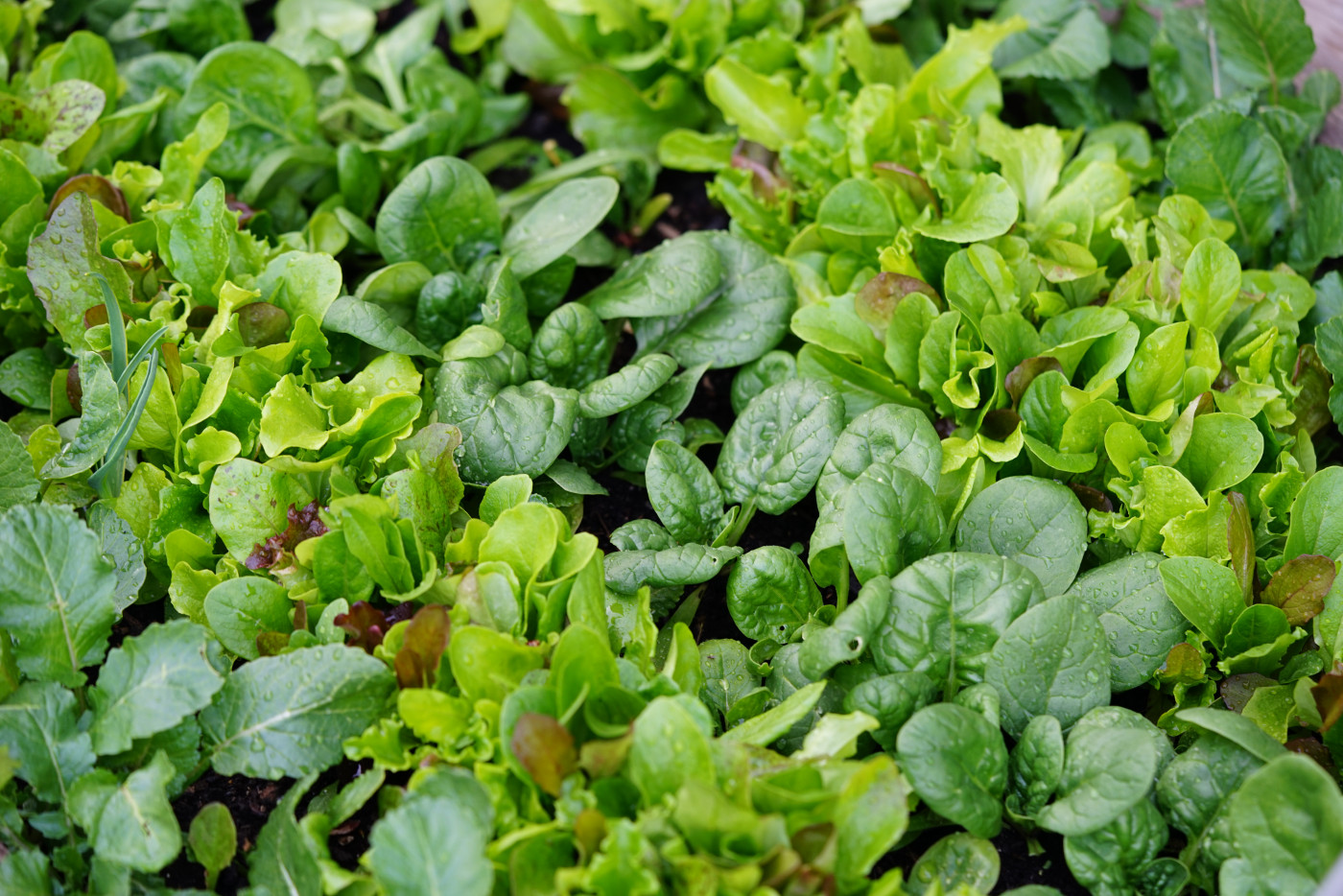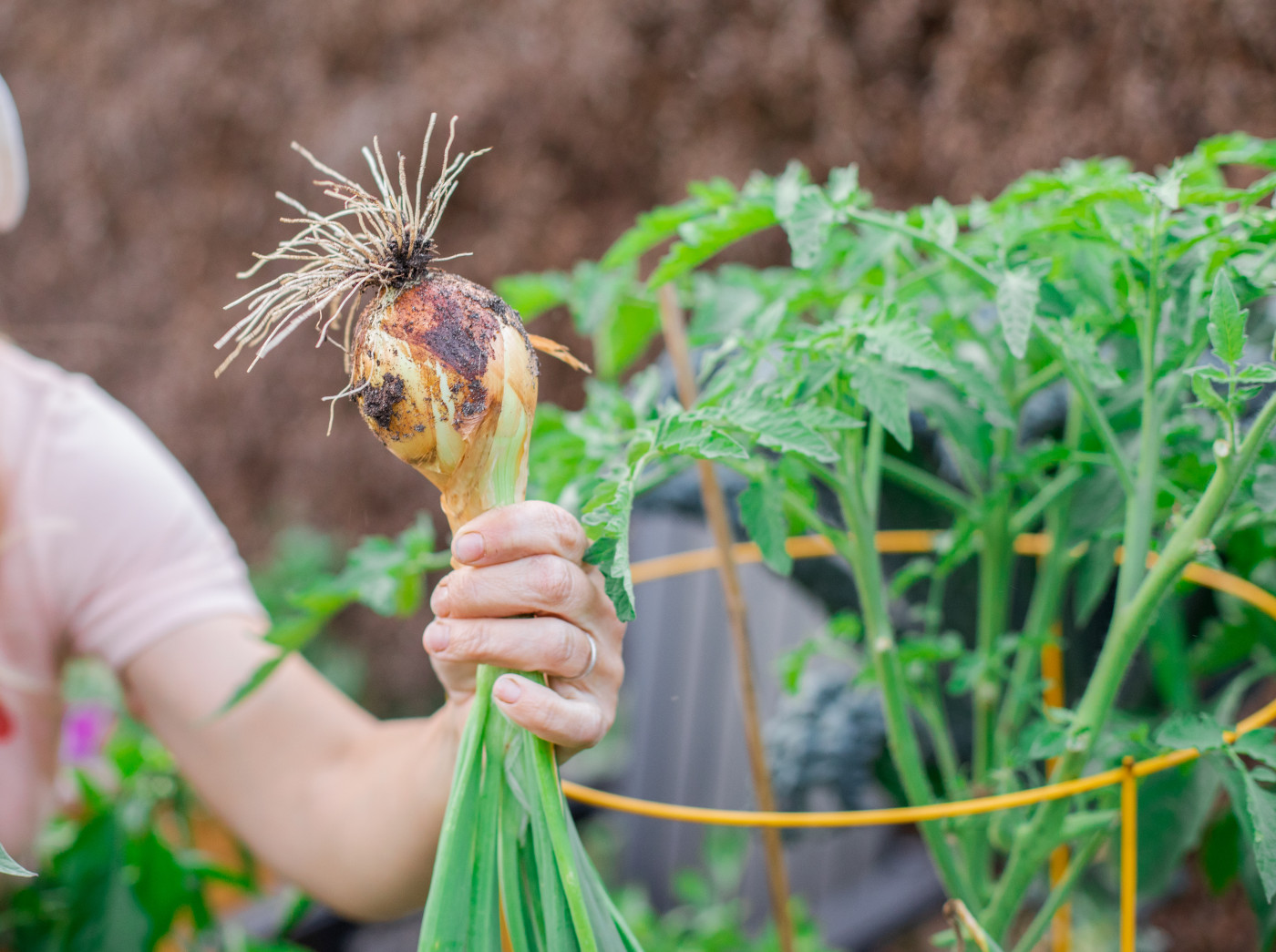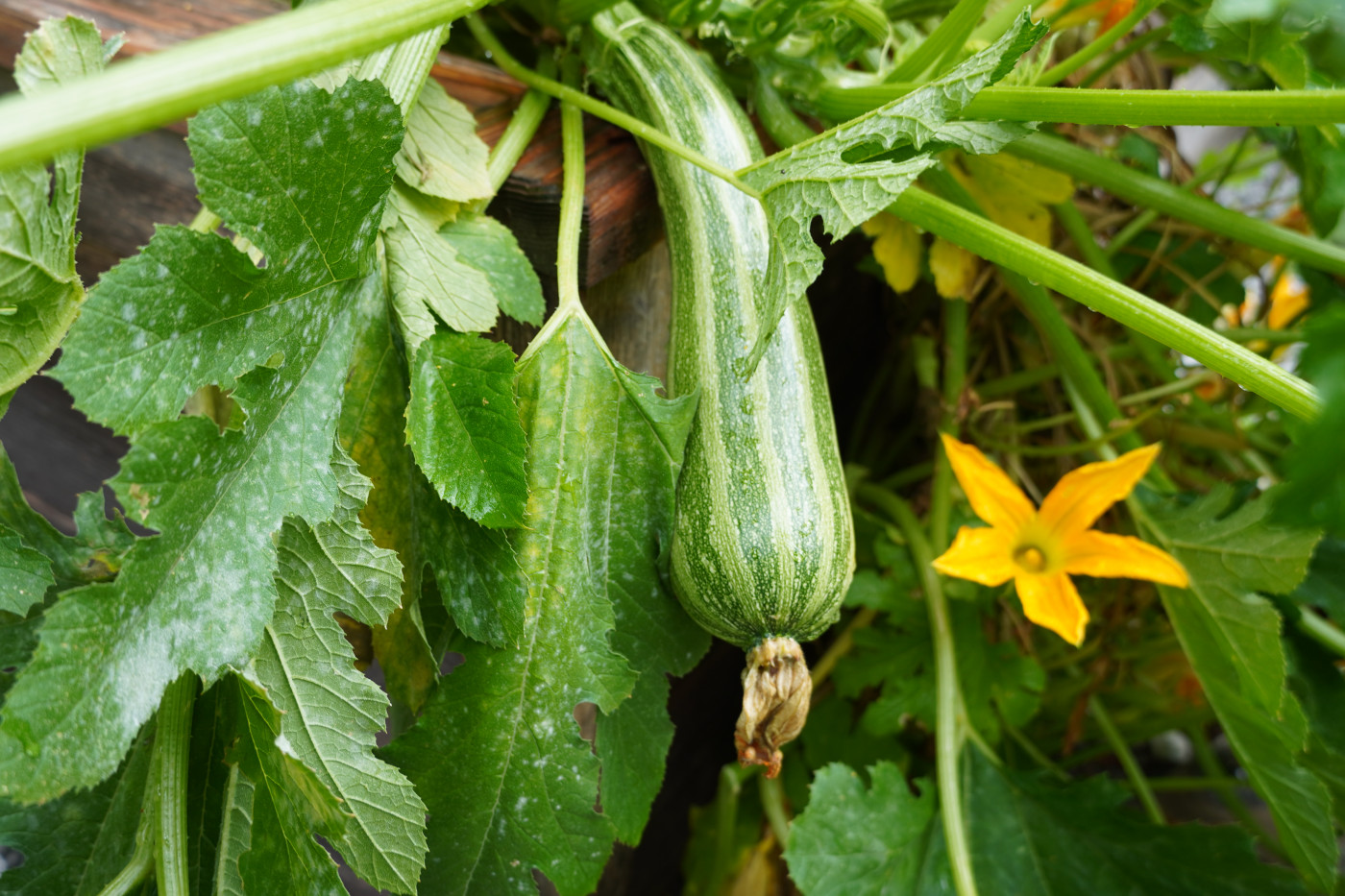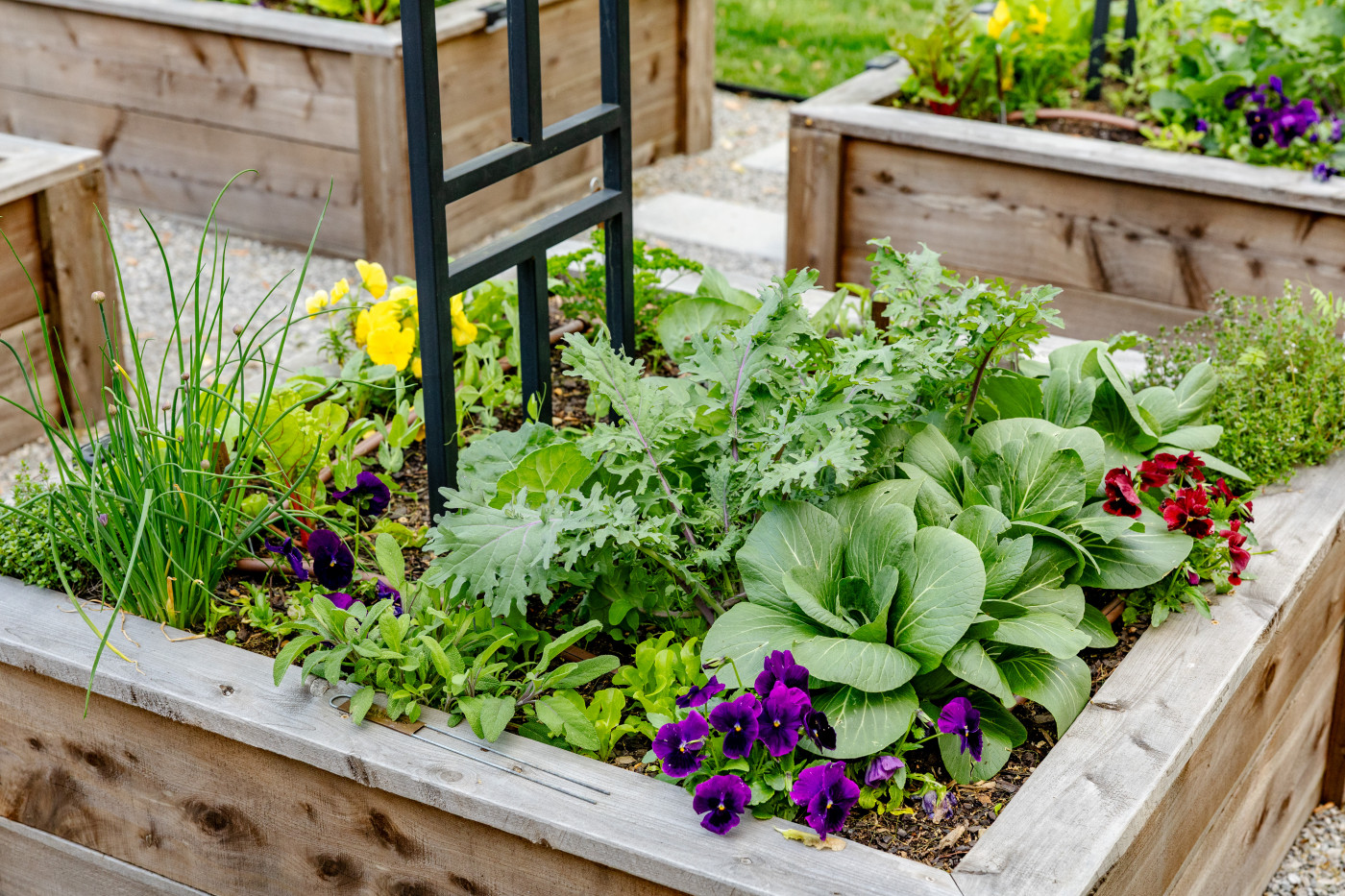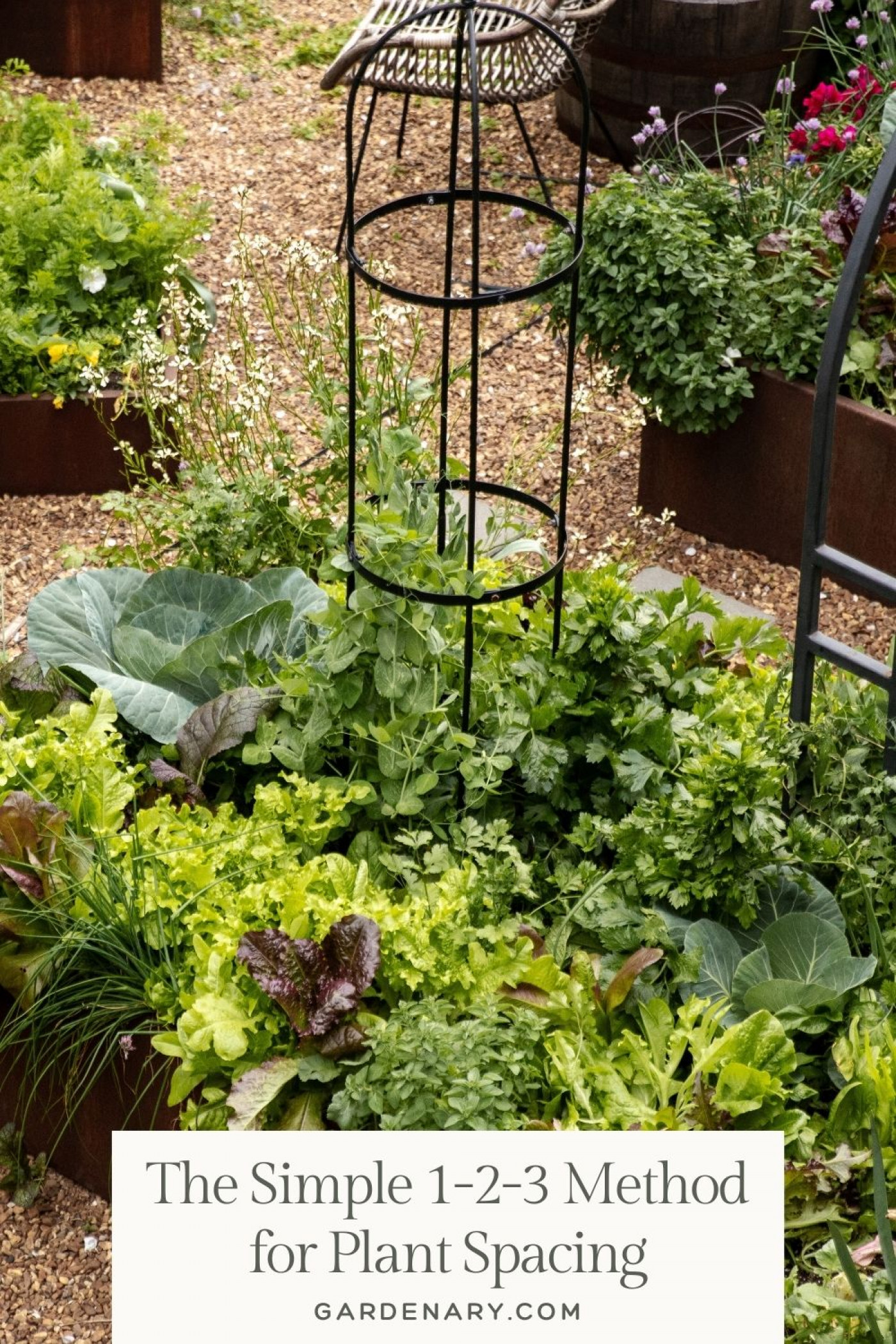At a Glance
- Learn why proper plant spacing impacts sunlight, root growth, and nutrient balance in your garden.
- Use the simple 1-2-3 Method—Leaves, Roots, and Fruits—to space every plant with confidence.
- See how mixing all three levels in one bed creates healthier plants, bigger harvests, and less work for you.
Why Plant Spacing Matters
After years of trial and error, I realized that spacing plants isn’t just about making them “look right.” It’s about their very survival. Plants need three things that spacing impacts directly:
- Sunlight – Every plant needs sun, but not all need the same amount.
- Root space – Plants compete underground as much as above ground.
- Nutrients – Soil only has so much to give, and greedy neighbors can rob the rest.
The key is to give each plant just enough room for its roots and leaves to grow, but not an inch more. That’s because we practice intensive planting, a method that uses every bit of available space in the garden. When plants grow close together, they actually help each other by shading the soil, conserving moisture, and even reducing weeds. The trick is finding that sweet spot where each plant has what it needs—no less, no more.
Once I learned the balance of proper spacing, I started seeing it as a system where all of the elements work together. And that’s where my 1-2-3 Method was born. I'll show you this simple method, so you won't need to overthink it anymore.
My 1-2-3 Plant Spacing Method
I like to group plants by what I’m harvesting from them: Leaves, Roots, and Fruits.
- Level 1 = Leaves
- Level 2 = Roots
- Level 3 = Fruits
It sounds simple, and it is, but it’s also highly impactful. Each level has its own needs for sunlight, root space, and nutrients. Spacing it is easy once you know which “level” a plant belongs to.
Level 1: Leafy Plants
Spinach, kale, arugula—all your greens belong here. These plants are quick-growing and shallow-rooted.
- Sunlight Needs: About 4 hours of sun, and it doesn’t have to be direct. Filtered or dappled light works fine. In fact, too much sun makes them bitter and can dry out the leaves. I often tuck lettuces in behind taller crops to give them shade.
- Root Needs: Minimal. Their roots sit right along the soil surface, so you don’t need deep beds or wide spacing here.
- Nutrient Needs: Nitrogen is their best friend. Nitrogen makes leaves lush, tender, and green. If you’ve ever had yellow, limp lettuce, it was probably starved for nitrogen.
One spring, I grew lettuce and spinach right alongside my trellised peas. The peas high up on the trellis shaded the lettuce during hot afternoons, and both crops thrived. It was like a little garden friendship I hadn’t planned, but now I do it on purpose.
Level 2: Root Crops
Carrots, radishes, onions—these guys need more attention to spacing.
- Sunlight Needs: Six hours of direct sun minimum. Roots need sun to build energy underground.
- Root Needs: These crops need more underground space to size up properly. If you crowd carrots, you’ll get stunted, twisted roots (ask me how I know). Two inches apart is usually the sweet spot for small roots, but bigger crops like beets need more.
- Nutrient Needs: Potassium helps them develop strong stems and healthy roots. Too much nitrogen here is a problem. You’ll end up with bushy greens and puny roots, which isn't what we're aiming for.
I’ll never forget my first carrot harvest. I pulled them too soon, and instead of long, beautiful carrots, I had stubby little nubs. I learned two lessons: patience and the importance of root spacing. Give them the room they need, and they’ll reward you.


Start Your Garden the Easy Way
Get growing with 10 foolproof seed varieties, a 120-page gardening guide, planting plans, and step-by-step video lessons—all designed to help you succeed. The Easy Garden Kit makes it simple, fun, and affordable to bring fresh food and flowers to your backyard.
Level 3: Fruiting Plants
Zucchini, cucumbers, peas, tomatoes—anything that flowers and fruits is in this group.
- Sunlight Needs: A minimum of 8–10 hours of direct sunlight. Fruiting takes energy, and there’s no shortcut here.
- Root Needs: These plants send roots deep, sometimes a foot or more. They don’t compete much on the surface but need plenty of deep, fertile soil.
- Nutrient Needs: Phosphorus is the key player here. It helps form flowers and fruits. Too much nitrogen will leave you with monster tomato plants that never produce a single tomato. Talk about frustrating!
Fruiting plants have big needs, which is why I generally don't recommend growing fruiting plants in small to medium planters. They need extra-large pots or a full-sized raised bed.
Putting It All Together: Companion Planting with the 1-2-3 Method
Here’s where the magic happens. You can plant all three levels together in the same bed, and they’ll thrive instead of competing.
Picture a 4x8 raised bed:
- Along a trellis, I can plant peas (level 3)—tall, sun-loving fruiters.
- Beneath them, I tuck onions and radishes (level 2)—root crops that don’t mind being shaded a little.
- Around the edges, I fill in with lettuce and spinach (level 1)—shallow-rooted greens that thrive in partial shade.
Everyone gets what they need. Nobody fights. And I get triple the harvest.
It feels a bit like a well-choreographed dance, and the best part is that it actually makes my garden easier to manage. There are so many benefits, like less watering, fewer weeds, and no need for fertilizer; the plants balance each other out.
The next time you plan your beds, try grouping plants by leaves, roots, and fruits. Pay attention to their unique needs for sun, soil, and nutrients. You’ll be amazed at how much easier it becomes to space your plants and how much more you can harvest from the same bed. In fact, when you let your plants set the pace, gardening feels less like a chore and more like a partnership with nature.
Click on the image below to save this article for later!


